Top Tier CPU Air Coolers Q3 2015: 9-Way Roundup Review
by E. Fylladitakis on July 6, 2015 8:00 AM ESTThe SilentiumPC Grandis XE1236
SilentiumPC is a Polish company that is fairly well known in Europe, yet with virtually no presence in the North American markets. The company was founded in 2007, aiming to provide a wide variety of cooling and case solutions at competitive prices. For the means of this review, SilentiumPC provided us with the Grandis XE1236, which currently is the best cooler the company produces.
The Grandis is supplied in an aesthetically plain but effective cardboard box. There is nothing of note regarding the appearance of the packaging, as the only artwork is a picture of the cooler itself. It does offer good shipping protection though, with the cooler protected inside a clear plastic shell and the bundled items grouped in secondary cardboard boxes.
With the company focused on minimizing the costs, we did not expect the bundle of the Grandis to be grand. Nevertheless, besides the necessary mounting hardware and wire clips for three fans, SilentiumPC provides a tube of quality Pactum PT-1 thermal compound and a Y 4-pin fan power splitter. A small wrench tool is also provided, necessary for the installation of the cooler.
The Grandis is supplied with two 120 mm cooling fans. Both fans are mechanically and electrically identical, with black solid frames and tinted black blades. They have been rebranded and it is difficult to recognize their OEM. Their electrical specifications, speed and sleeving type match the Power Logic PL12S12L, yet the acoustic ratings are worlds apart.
The Grandis XE1236 is a symmetric dual tower CPU cooler, with relatively narrow towers for its class. The fins of both towers are perfectly symmetric as well, meaning that both their front and rear sides are identical, mostly straight with shallow indentations near their center. SilentiumPC died the top fin black, obviously for aesthetic purposes only, but it does not cover the copper heatpipes.
Up to three 120 mm cooling fans can be installed on the Grandis, using the provided wire clips. The wire clips are strangely shaped and very wide, expanding above and below the cooling fans. This makes them flimsy and prevents the movement of the front fan upwards to offer clearance for the RAM modules, if necessary. The center fan will have to be removed for the installation of the cooler, as there are no holes for a screwdriver. Do note that a Philips PH2 screwdriver with a shank longer than 145 mm is necessary for the installation of the Grandis, which is not supplied.
The base of the Grandis XE1236 is about as simple as the rest of the cooler is. It is split into two parts: the narrow lower copper part serves as the contact surface and the aluminum/steel top part provides mechanical cohesion and retention. Six 6 mm copper heatpipes expand from the base of the cooler to either tower on both sides, evenly spaced at the right and the left half of each tower. In order to keep the costs down, SilentiumPC did not plate the copper parts of the Grandis. The quality of the contact surface is disappointing, not because it has not been polished at all but because there are multiple machining marks visible with the naked eye and easily feelable by touch.


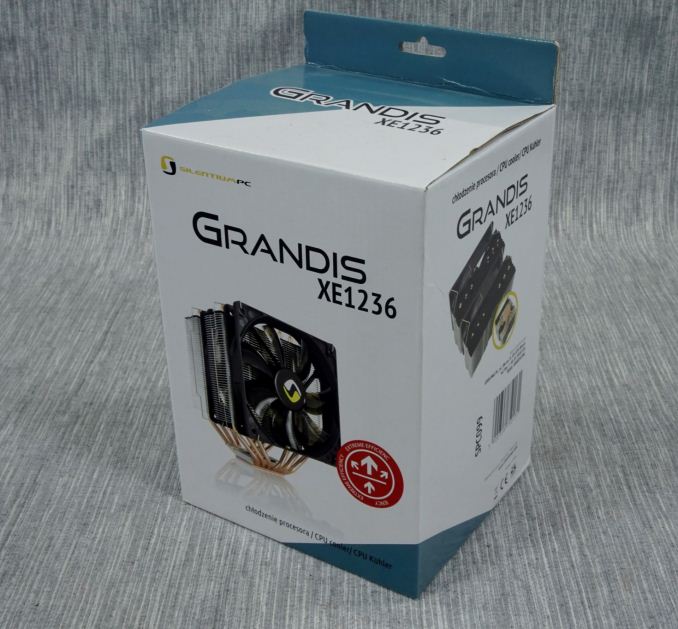
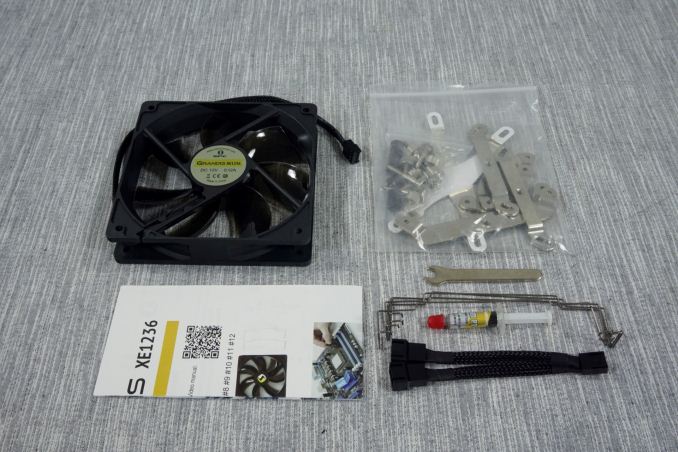
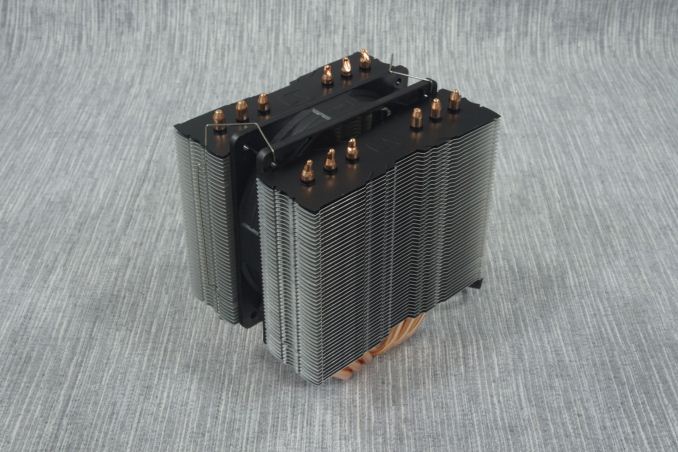
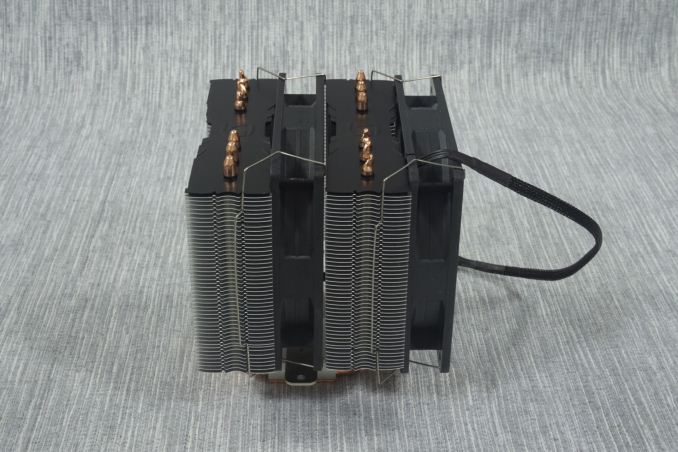
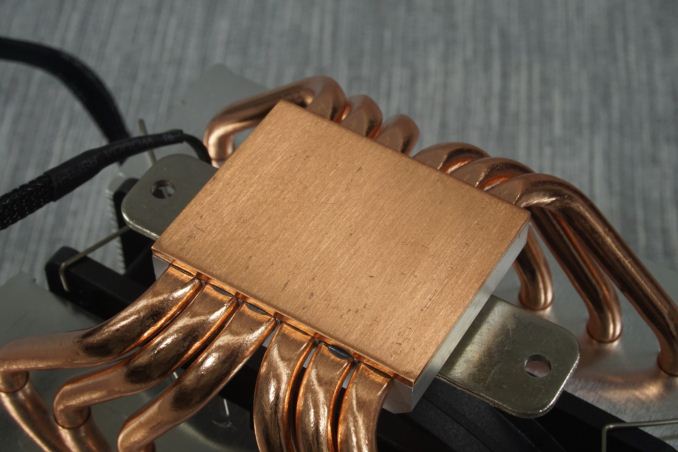








135 Comments
View All Comments
zodiacfml - Tuesday, July 7, 2015 - link
Someone should test for this. It is quite plausible as it will take time to increase the temperature of water/coolant in the system. Yet, for longer and continuous loads, surface area matters to dump heat in the environment which AIO coolers has less to a similarly priced Big Air cooler which shows in benchmarks.Navvie - Tuesday, July 7, 2015 - link
Pretty good.It'd be nice if there was a base line (say intel's current stock cooler) and an AIO water cooler to show the difference between a top tier air cooler and what many consider to be the next step.
One point, SPCR always test each cooler with a 'reference' fan, making it easier to compare the heatsink's efficiency. Can't help but feel you didn't complete the task you set out to by levelling the playing field with your simulated CPU heat source.
maximumGPU - Tuesday, July 7, 2015 - link
Great roundup! i for one still believe high end air a good alternative to water if you want dead silence.What i still can't understand is how can Nocuta get away with shipping the most expensive air cooler, likely to be used by enthusiasts who care about aesthetics, with the most hideous fan colours?
'nar - Tuesday, July 7, 2015 - link
Noctua colors are odd, but I think it forces you to consider performance more than aesthetics. They do look nice, but not "cool" - no pun in tended.Dead silence basically depends on how much heat you need to dissipate, temperature of ambient air, surface area of fins/radiator, air flow, and heat transfer capability of the cooler. Or more basically, how easily you can transfer heat from CPU to the air. Water increases the efficiency of heat transfer, so once you reach a certain power level they will overtake HSF's. They will never be as quite as a good HSF, at least not on low-power CPU's that arguably do not need anything but the stock cooler to begin with.
xthetenth - Tuesday, July 7, 2015 - link
Noctua gets away with those colors entirely because they're Noctua. Yes they're not pretty colors, but unlike nice bright/garish colors they are an unmistakable sign that they're the best or at least tied for best.piroroadkill - Wednesday, July 8, 2015 - link
Your keyboard seems to have a problem, you've typed "hideous" when clearly "fantastic" would be better. Noctua fans are neat.Beaver M. - Wednesday, July 15, 2015 - link
Well, serious people are more likely to buy Noctua anyway. And no serious user cares about what the fans look like, and even if they did, they would still take the Noctua, since you can CLEARLY see the extremely high quality they are just by looking at them. Windows in cases and other stupid bling bling is for the PC-ricer gang. They only choose after looks anyway, and dont care if their fans make noises from day one.PrinceGaz - Tuesday, July 7, 2015 - link
Excellent review of what seem to be very good HSFs throughout (but then again, you did ask them to send their best).A comparison with the stock Intel cooler as supplied with something like the 4790K would be nice, as that is what any expense on a third-party cooler must be compared against. How would the stock-cooler compare at 340W? I was very impressed with the degC/W figures for all those coolers; it almost makes 340W seem an amount of heat that can be dealt with, though I'm thinking it's crazy.
As well as the stock-cooler from a highish end CPU, one or two commonly used AIO liquid-coolers needs to be added to provided a second comparison point, as these high-end air-coolers are presumably expected to be near, possibly even better than a liquid AIO.
I love the fact you are using a properly designed heating rig, and your comprehensive review, but I came away thinking: they're good! But I've no idea how much better they are than the stock cooler, or how any of them would compare with the liquid AIOs also available, both in terms of cooling or noise.
Sivar - Tuesday, July 7, 2015 - link
This is probably the best CPU cooler article I've read (and I read such articles when Anandtech when it was on Geocities).Excellent writing, useful measurements, and a cogent conclusion. Thank you, Emmanouil!
orangesky - Tuesday, July 7, 2015 - link
SilentPcReview just posted a review of the new Scythe Ninja 4: http://www.silentpcreview.com/article1462-page1.ht... The review includes some good comparison tables with many of the popular air & water coolers.Sounds like a pretty decent option, and probably the best Ninja since the original.